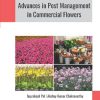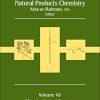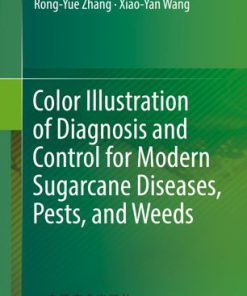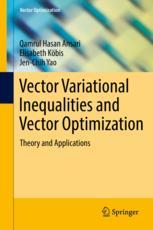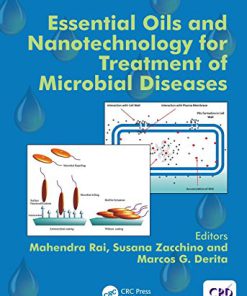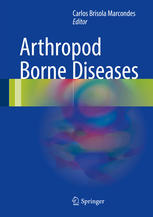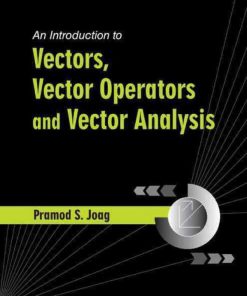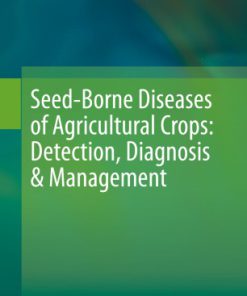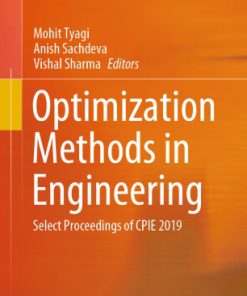Microbial control of vector borne diseases 1st Edition by Brij Kishore Tyagi, Dharumadurai Dhanasekaran 1351677875 9781351677875
$50.00 Original price was: $50.00.$25.00Current price is: $25.00.
Microbial control of vector-borne diseases 1st Edition by Brij Kishore Tyagi, Dharumadurai Dhanasekaran – Ebook PDF Instant Download/DeliveryISBN: 1351677875, 9781351677875
Full download Microbial control of vector-borne diseases 1st Edition after payment.
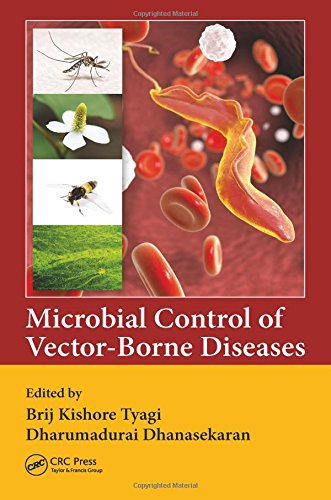
Product details:
ISBN-10 : 1351677875
ISBN-13 : 9781351677875
Author: Brij Kishore Tyagi, Dharumadurai Dhanasekaran
Vector-borne diseases have increasingly emerged as significant causes of human illnesses worldwide, largely due to environmental changes (deforestation), population movements (migration and travelling), international trades, and buildup of drug resistance. These are presenting major challenge to the efficacy and use of conventional tools for controlling vector-borne diseases. Therefore, use of microbial approach for the control of vector-borne diseases is gaining importance. This book comprehensively reviews vector-borne diseases and their microbial control, emphasizing majorly on ecofriendly ways of microbial control.
Microbial control of vector-borne diseases 1st Table of contents:
Chapter 1 Microbial BiomoleculesChallenges to Control and Prevent Vector-Borne Diseases
1.1 Introduction
1.1.1 Brief Introduction to Vector-Borne Diseases (VBDs)
1.1.2 Effects of VBDs on the Public
1.2 Microbial Biomolecules against Vector-Borne Diseases
1.2.1 Introduction to Antimicrobial Peptides
1.2.2 Malaria
1.2.3 Chagas Disease (American Trypanosomiasis)
1.2.4 Leishmaniasis
1.2.5 Dengue and Japanese Encephalitis
1.2.6 West Nile Fever
1.3 Vector-Borne Disease Control and Prevention
1.3.1 Development of Model for the Control and Prevention of VBDs
1.3.2 Environmental Management and Community Participation
1.3.3 Health Care Education
1.3.4 Personal Prophylactic Measures
1.4 Conclusion
References
Part I Microbial Control of Mosquito Vector
Chapter 2 AutodisseminationCurrent and Future Potential in the Application of Entomopathogenic Fungi against Mosquito-Borne Diseases
2.1 Introduction
2.2 The Concept of Autodissemination
2.3 Levels of Virulence and Sublethal Effects
2.4 Effect of Metarhizium anisopliae on Transmission
2.5 Concluding Remarks
Acknowledgments
References
Chapter 3 Inhibition of Mosquito Vectors of Malaria and Filariasis Using Marine Microorganisms and Their Associated Compounds
3.1 Introduction
3.2 Mosquito Breeding Burden: A World Scenario
3.3 The Role of Actinomycetes in Vector Control
3.4 The Dreaded Vector-Borne Disease: Malaria
3.5 Second in Vector-Based Diseases: Filariasis
3.6 Conclusion
Acknowledgments
References
Chapter 4 Entomopathogenic Fungi-Mediated Biocontrol Mechanisms against Mosquito VectorsRecent Trends and Future Perspectives
4.1 Introduction
4.1.1 Vector-Borne Diseases and Impact on Socioeconomic Status
4.1.2 Mosquito-Borne Diseases and Health Effects
4.1.3 Traditional Vector-Control Programs and Implications
4.1.4 Biological Control of Mosquito Vectors
4.1.5 Entomopathogenic Fungi as Alternative Tools in Control of Vector-Borne Diseases
4.2 An Insight into the World of Entomopathogenic Fungi
4.2.1 Classification of Entomopathogenic Fungi
4.2.2 Pathogenicity of Entomopathogenic Fungi
4.2.2.1 Entomopathogenicity and Molecular Mechanisms in Beauveria bassiana and Metarhizium anisopliae
4.2.3 Interaction with the Host Immune System
4.2.4 Genes Involved in the Pathogenicity of Entomopathogenic Fungi
4.2.5 Factors That Affect the Virulence of Entomopathogenic Fungi
4.3 Recent Trends in Control of Mosquito Vectors by Entomopathogenic Fungi
4.3.1 Control of Mosquito Vectors by Metarhizium anisopliae
4.3.2 Control of Mosquito Vectors by Beauveria bassiana
4.3.3 Control of Mosquito Vectors by Other Entomopathogenic Fungi
4.4 Technological Expansion and Genetic Engineering Strategies to Enhance Mosquito Vector Control Programs
4.4.1 Novel and Integrative Formulation in Entomopathogenic Fungi: A New Pragmatic Approach
4.4.2 Genetic Engineering Strategies
4.5 Future Avenues and Challenges of Entomopathogenic Fungi-Based Vector Control Measures
References
Chapter 5 Bioprospecting of Novel Fungal Secondary Metabolites for Mosquito Control
5.1 Introduction
5.1.1 Vector-Borne Diseases
5.1.2 Populations Affected by Vector-Borne Disease
5.1.3 Mosquitoes
5.1.4 Anopheles Mosquito and Malaria
5.1.5 Aedes Mosquito and Dengue
5.1.6 Culex Mosquito
5.1.7 Insecticides for Mosquito Control
5.1.8 Insecticide Resistance in Mosquitoes
5.2 Insecticide Resistance Mechanisms in Insects
5.2.1 Evidence of Insecticide Resistance in Mosquitoes
5.2.2 Insecticide Resistance in Mosquitoes
5.2.3 Modes of Insecticide Resistance
5.2.4 Insecticide Resistance Mechanisms
5.2.4.1 Metabolic Resistance Mechanisms
5.2.4.2 Target-Site Resistance
5.2.4.3 Behavioral Resistance
5.2.4.4 Cross-Resistance
5.3 Biological Control
5.3.1 Plant-Derived Secondary Metabolites
5.3.2 Microbial Secondary Metabolites
5.3.2.1 Bacterial Metabolites
5.3.2.2 Viral Metabolites
5.4 Classification of Entomopathogenic Fungi
5.4.1 Ascomycota and Deuteromycota
5.4.2 Zygomycota
5.4.3 Chytridiomycota
5.4.4 Oomycota
5.4.5 Ascomycota
5.5 Fungal Metabolites
5.6 Insecticidal Secondary Metabolites
5.7 Advantages of Biological Pesticide
5.8 Isolation and Formulation of Fungal Secondary Metabolites
5.8.1 Extraction of Secondary Metabolites
5.8.2 Secondary Metabolite Formation as a Resistance Trait in Fungi
5.8.3 Interactions with Insect Competitors
5.9 Futures of Mycoinsecticides
5.9.1 Mycoinsecticides
5.10 Conclusion
References
Chapter 6 Mosquito Larvicidal Properties of Mycogenic Silver Nanoparticles Derived from Aspergillus niger against Culex quinquefasciatus
6.1 Introduction
6.2 Materials and Methods
6.2.1 Mycosynthesis of Silver Nanoparticles
6.2.2 Characterization of Silver Nanoparticles
6.2.2.1 Ultraviolet-Visible (UV-Vis) Spectroscopy
6.2.2.2 Fourier Transform Infrared Spectroscopy (FTIR)
6.2.2.3 X-Ray Diffraction (XRD)
6.2.2.4 Scanning Electron Microscopy (SEM)
6.2.3 Mosquito Larvae Rearing of Culex quinquefasciatus
6.2.4 Mosquito Larvicidal Bioassay
6.2.5 Dose–Response Bioassay
6.2.6 Statistical Analysis
6.2.7 Morphological Variation
6.2.7.1 Confocal Laser Scanning Microscopy (CLSM)
6.3 Results
6.3.1 Formation of Silver Nanoparticles
6.3.2 Characterization
6.3.2.1 UV-VIS Spectroscopy
6.3.2.2 FTIR
6.3.2.3 XRD
6.3.2.4 SEM Analysis
6.3.3 Larvicidal Activity
6.3.4 Morphological Variation
6.4 Discussion
Acknowledgments
References
Chapter 7 Larval Toxicity of Entomopathogenic Bacteria Bacillus cereus against Aedes aegypti, Anopheles stephensi, and Culex quinquefasciatus Mosquitoes
7.1 Background
7.1.1 Vector-Borne Disease
7.1.1.1 Aedes Species
7.1.1.2 Anopheles Species
7.1.1.3 Culex Species
7.1.2 Mosquito Control Measures
7.1.2.1 Physical Method
7.1.2.2 Chemical Method
7.1.2.3 Biological Methods
7.1.2.3.1 Plants Act as Mosquitocidal Activity
7.1.2.3.2 Animals (Larvivorous fish)
7.1.2.3.3 Invertebrate Predators
7.1.2.3.4 Entomopathogens
7.1.2.3.4.1 Entomopathogenic Bacteria
7.1.2.3.4.2 Entomopathogenic Nematode
7.1.2.3.4.3 Protozoa and Entomopathogenic Fungi
7.2 Materials and Methods
7.2.1 Soil Sample Collection
7.2.2 Bacterial Isolation
7.2.3 Test Insects
7.2.4 Preliminary Larvicidal Activity
7.2.5 Extraction of Crude Extract
7.2.6 Larvicidal Activity of Solvent Extract
7.2.7 Identification of the Potential Bacterial Strain
7.2.8 Molecular Identification of Bacteria
7.2.9 Identification of Bacterial Isolate by 16S rRNA Analysis
7.2.10 DNA Sequence Analysis
7.2.11 Phylogenetic Analysis of Bacterial Isolate
7.3 Statistical Analysis
7.4 Results
7.5 Discussion
7.6 Summary and Conclusion
Acknowledgments
References
Chapter 8 Natural Weapons Used against Dengue Vector Mosquito, Aedes aegypti
8.1 Introduction
8.2 Dengue Virus Infection
8.3 Treatment Protocols for Dengue Fever
8.4 Biological Control of Dengue Vector and Antiflaviviral Agents
8.4.1 Bacteria and Fungi (Bacteriophyta and Mycophyta)
8.4.2 Lichens (Lichenes)
8.4.3 Algae
8.4.4 Marine Sponges
8.5 Antiflaviviral (Anti-Dengue) and Mosquitocidal Plants and Their Active Principles
8.5.1 Antiflaviviral (Anti-Dengue) Plants and Their Active Principles
8.5.2 Mosquitocidal Plants and Their Active Principles Used against Aedes aegypti
8.6 Conclusion
References
Chapter 9 Paratransgenesis Involving MicrobesA New Avenue for the Control of Vector-Borne Diseases
9.1 Introduction
9.2 Endosymbionts for the Vector Control
9.3 Bacterial Endosymbionts in Insects
9.4 Strategies of Controlling Vector-Borne Diseases through Microbials
References
Chapter 10 Microbial Control of Vector-Borne Diseases in Thailand: A Review
10.1 Introduction
10.2 Biological Methods for Controlling Vector-Borne Diseases in Thailand
10.2.1 Application of Predators of the Vector
10.2.1.1 Using Aquatic Insects
10.2.1.2 Using Larvivorous Fish
10.2.2 Application of Pathogens of Vectors
10.2.2.1 Using Wolbachia Species
10.2.2.2 Using Bacillus Species
10.2.2.3 Using Penicillium Species
10.3 Reports of Using Biological Controls on Vector-Borne Diseases in Thailand
10.3.1 Dengue
10.3.2 Malaria
10.3.3 Filariasis
10.3.4 Japanese Encephalitis
10.4 Conclusion
References
Chapter 11 Biocontrol Potential of Symbiotic Bacterium Wolbachia against Mosquito-Borne Diseases
11.1 Introduction
11.2 Brief History about Wolchia
11.3 Taxonomy and Phylogeny of the Wolbachia
11.4 Cytoplasmic Incompatibility
11.4.1 Outcome of Cytoplasmic Incompatibility
11.5 Transinfection of Wolbachia into Mosquitoes
11.6 Pathogenic Interference
11.7 Potential Use of Wolbachia for Arboviral Diseases
11.8 Wolbachia Bacteria in Filarial Immunity and Disease
11.9 Effect of Wolbachia on Plasmodium
11.10 Genomic Insights into Wolbachia–Host Interactions
11.10.1 Ankyrin Repeat Proteins
11.10.2 WO Phage
11.10.3 Wolbachia Surface Protein
11.11 Wolbachia and Host Membrane
11.12 Wolbachia Invasion of Mosquito Populations
11.13 Fitness of Wolbachia-Infected Mosquitoes
11.14 Conclusions and Perspectives
References
Chapter 12 Wolbachia An Effective Biocontrol Agent
12.1 Introduction
12.2 Wolbachia As a Biocontrol Agent
12.2.1 Cytoplasmic Incompatibility (CI)
12.2.2 Feminization
12.2.3 Parthenogenesis Induction (PI)
12.2.4 Male Killing (MK)
12.3 Recent Developments in Wolbachia-Based Research
12.4 Conclusion
Acknowledgments
References
Chapter 13 Microorganisms in the Management of VectorsA Sustainable Ecological Approach
13.1 Introduction
13.2 Microorganisms for Vector Control
13.2.1 Bacteria and Virus
13.2.2 Fungus and Protozoa
13.3 Bacillus Thuringiensis Israelensis
13.4 Bacillus Sphaericus
13.5 Wolbachia
13.6 Discussion
13.7 Conclusion
Acknowledgments
References
Chapter 14 Midgut Bacterial Microbiota of Important Mosquito Disease Vectors and Its Role in Control of Parasite Transmission
14.1 Introduction
14.2 Disease Management Strategies
14.3 Alternative Methods of Vector Control
14.4 Mosquito Midgut and Microbiota
14.4.1 Acquisition and Establishment of Microbiota Inside Mosquito Midgut
14.4.2 Effect of Feeding Habits on Microbial Diversity
14.5 Characterization of Midgut Microbiota
14.5.1 Sample Collection
14.5.2 Dissection of Mosquito Midgut
14.5.2.1 Culture-Dependent-Based Identification
14.5.2.1.1 Isolation and Purification of Midgut Bacteria
14.5.2.1.2 Characterization of Bacterial Isolates
14.5.2.1.2.1 Biochemical Characterization
14.5.2.1.2.2 Molecular Characterization
14.5.2.2 Culture-Independent-Based Identification
14.5.3 Fluorescent In Situ Hybridization (FISH)
14.6 Important Roles of Mosquito Midgut Microbiota
14.6.1 Midgut Microbiota in Defense against Parasites/Pathogens
14.6.2 Midgut Microbiota in Food Digestion and Assimilation
14.6.3 Midgut Microbiota in Fertility and Fecundity
14.6.4 Midgut Microbiota as Biolarvicides
14.6.5 Gut Microbiota and Insecticide Degradation in Insecticide-Resistant Insects
14.7 Paratransgenesis
14.8 Wolbachia Endosymbiotic Bacteria
14.8.1 Wolbachia-Mediated Cytoplasmic Incompatibility
14.8.2 Wolbachia-Mediated Life Shortening and Vector Incompetency
14.9 Conclusion
References
Chapter 15 A Review of Control of Blood Sucking Parasites by Marine Actinomycetes-Derived Compounds
15.1 Introduction
15.2 Vector Control and Drug Resistance
15.3 Microbial Vector Control
15.4 Marine/Terrestrial Actinomycetes-Mediated Vector Control
15.5 Marine Actinomycetes-Derived Nanoparticles As Vector Control Agents
15.6 Antiparasitic Compounds from Actinomycetes
15.7 Conclusion
Acknowledgments
References
Chapter 16 Cyanobacterial Toxins as Biolarvicides for Blood-Sucking Vectors
16.1 Introduction
16.2 Mosquitos As Vectors for Disease
16.2.1 Diseases Vectored by Mosquitoes
16.3 Cyanobacteria As a Potential Source for Mosquito Larvicidal Compounds
16.3.1 Cyanobacteria and Mosquito Sympatry
16.3.2 Grazer Choice of Food within Periphyton
16.3.3 Mosquito Larvae Feeding on Periphyton
16.3.4 Cyanobacteria: Novel Insecticides and Candidates for Biological Control Agents
16.3.5 Effects of Anatoxin-a and Microcystin-LR on Mosquito Larvae
16.4 Isolation and Characterization of Mosquito Larvicidal Compounds from Cyanobacteria
16.4.1 Bioassays
16.4.2 Fractionation
16.4.3 Characterization
16.4.4 Toxicological Analyses
16.5 Significance
16.5.1 Novelty
16.5.2 Evaluation of the Potential Environmental Effects of Using Unsaturated Fatty Acids to Control Mosquito Populations
16.5.3 Palmitoleic Acid as a Mosquito Control Agent
16.6 Conclusion
Acknowledgments
References
Chapter 17 The Genetically Altered Microbes and Viruses in Control of Mosquito-Borne Diseases
17.1 Introduction
17.2 Mosquito Control Strategies
17.3 Use of Genetically Altered Microbes
17.3.1 Genetically Altered Bacteria
17.3.2 Genetically Altered Fungi
17.3.3 Genetically Altered Yeasts
17.4 Use of Genetically Altered Viruses
17.5 Conclusion
References
Part II Microbial Control of Leishmania Vector
Chapter 18 Antileishmanial Compounds from Microbial Sources for Leishmaniasis Prevention
18.1 Introduction
18.2 Vector Control Using Bioinsecticides
18.3 Perspective on Antileishmanial Drugs
18.4 Microorganisms Involved in Management of Leishmaniasis
18.4.1 Bacteria
18.4.2 Fungi
18.4.3 Cyanobacteria
18.4.4 Algae
18.5 Conclusions
References
Part III Microbial Control of Schistosomiasis Vector
Chapter 19 Biological Control of Aquatic Snail-Borne Diseases (Schistosomiasis)
19.1 Epidemiology of Schistosomiasis
19.1.1 Introduction to Schistosomiasis
19.1.2 Etiology of Schistosomiasis
19.1.3 Characteristics of Schistosomiasis
19.1.4 Pathophysiology of Schistosomiasis
19.1.5 Epidemiology of Schistosomiasis
19.1.6 Incidence of Schistosomal Infection in United Republic of Tanzania
19.1.7 Distribution of Schistosomiasis
19.1.8 Prevalence of Schistosomiasis Disease
19.2 Life Cycle of Schistosome Parasite and Its Transmission to Human Beings
19.2.1 Snails, the Intermediate Host
19.2.2 Ecology of Snails
19.2.3 Schistosomal Infection
19.2.4 The Life Cycle of Schistosome Parasite
19.2.5 Transmission of Schistosomiasis in Human Beings
19.2.5.1 Urogenital System
19.2.5.2 Schistosomal Infection in Intestines
19.2.5.3 Asymptomatic Ectopic Formation of Granuloma
19.2.5.4 Schistosomal Infection in the Liver
19.2.5.5 Central Nervous System
19.2.5.6 Genital Schistosomiasis
19.2.6 Development of Fibrotic Lesions in Human Body
19.3 Transmission of Schistosomiasis by Snails and Natural Habitat of Snails
19.3.1 Classification of Snails
19.3.2 Snail as a Gastropod
19.3.3 Habitat of Snails
19.3.3.1 Snail Adaptation to Habitats
19.3.4 Transmission of Schistosomiasis Disease by Snails
19.3.4.1 Snail Biology
19.3.4.2 Snail Hosts for Schistosoma haematobium and Schistosoma mansoni
19.3.4.3 Transmission of Schistosomal Infection in Humans, Reservoir Hosts
19.3.5 Transmission of Schistosomal Infection and Its Environmental Influence
19.4 Biological Names of the Snails and Their Life Cycle
19.4.1 Overview of Gastropods
19.4.2 Life Cycle of the Snail
19.4.2.1 Process of Courting and Mating
19.4.2.2 Process of Breeding
19.4.2.3 Process of Fertilization
19.4.2.4 Process of Hatching
19.4.2.5 Process of Maturing
19.4.2.6 Hibernation and Estivation in Snails
19.5 Spread of Schistosomiasis
19.5.1 Water as Means of Spreading Schistosomiasis
19.5.2 Effect of Large Dams on the Prevalence of Schistosomiasis
19.5.3 Spread of Schistosomal Infection in Humans
19.5.4 Pathogenesis of Schistosomal Infection
19.5.5 Spread of Schistosomal Infection in Intestinal Tissues
19.5.6 Spread of Schistosomal Infection in Liver Tissues
19.5.7 Spread of Schistosomal Infection in Cardiac Tissues
19.6 Historical Evidence of Man-Made Water Systems in Developing Schistosomiasis
19.6.1 Deforestation Contributes to Schistosomiasis Disease
19.6.2 Crop Farming and Ranching Support Parasitic Growth
19.6.3 Water Bodies in Disrupted Areas Cause Schistosomal Infection
19.6.4 Movement of Humans Increases Prevalence of Schistosome Parasites
19.6.5 Vector Competence and Spread of Schistosomal Infection
19.6.6 Schistosomiasis and Different Water Control Projects
19.6.7 Water Resources Development and Schistosomiasis
19.7 Problems in Controlling Snail Population
19.7.1 Regional Schistosomiasis Control Programs
19.7.2 Control of Snail Population
19.8 Treatment Measures for Schistosomiasis
19.8.1 Drugs Used for Treatment of Schistosomiasis
19.8.2 Surgical Care for Schistosomiasis
19.8.3 Clinical Management of Intestinal Schistosomiasis
19.9 Chemical and Biological Control Measures of Schistosomiasis
19.10 Biological Methods for Control of Schistosomiasis
19.11 Biological Measures of Controlling Aquatic Snails
19.11.1 Competitor Snails (Apple Snail)
19.11.2 Biomphalaria glabrata
19.11.3 Sargochromis codringtonii
19.12 Advantages and Disadvantages of Biological Methods
19.12.1 Advantages and Disadvantages of Bacterial Pathogens
19.12.2 Advantages and Disadvantages of Plants
19.12.3 Advantages and Disadvantages of Predators
19.12.4 Advantages and Disadvantages of Competitor Snails
19.12.5 Genetic Manipulation of Snails
19.13 The Best Biological Method
19.13.1 Bacterial Pathogens
19.13.2 Reasons behind Effectiveness of Bacterial Pathogens
19.14 Conclusion
19.15 Future Aspects
References
Part IV Microbial Control of Black Fly Vector
Chapter 20 Microbial Approaches for Black Fly-Targeted Onchocerciasis Control
20.1 Introduction
20.2 Black Fly Life Cycle
20.3 Parasite Transmission
20.4 Onchocerciasis
20.4.1 Human Onchocerciasis
20.4.1.1 Life Cycle of Onchocerca volvulus
20.4.1.2 Symptoms
20.4.2 Zoonotic Onchocerciasis
20.5 Treatment and Control: Microbial Perspectives
20.5.1 Parasite Control
20.5.2 Vector Control
20.6 Conclusion
Acknowledgments
References
Part V Microbial Control of Flea Vector
Chapter 21 Effective Microbial Compounds for Controlling Flea-Borne Rickettsial Diseases
21.1 Introduction
21.1.1 Natural History of Flea-Borne Rickettsial Diseases
21.1.2 Indian Scenarios
21.2 Laboratory Findings
21.2.1 Differential Diagnosis
21.3 Treatment of Flea-Borne Rickettsial Diseases
21.3.1 Preventive Measures
21.3.2 Control and Surveillance of Flea-Borne Rickettsial Diseases
21.4 Concluding Remarks
People also search for Microbial control of vector-borne diseases 1st:
microbial control of vector borne diseases
what are examples of vector borne diseases
how to control vector borne diseases
types of vector-borne diseases
which is vector borne disease
Tags: Microbial control, vector borne diseases, Brij Kishore Tyagi, significant causes, Dharumadurai Dhanasekaran
You may also like…
Biology and other natural sciences - Plants: Agriculture and Forestry
Science (General)
Computers - Computer Science
Computers - Computer Science
Natural Language Processing in Artificial Intelligence 1st Edition Brojo Kishore Mishra
Mathematics - Analysis
Biology and other natural sciences - Plants: Agriculture and Forestry
Seed Borne Diseases of Agricultural Crops Detection Diagnosis amp Management Ravindra Kumar
Engineering


